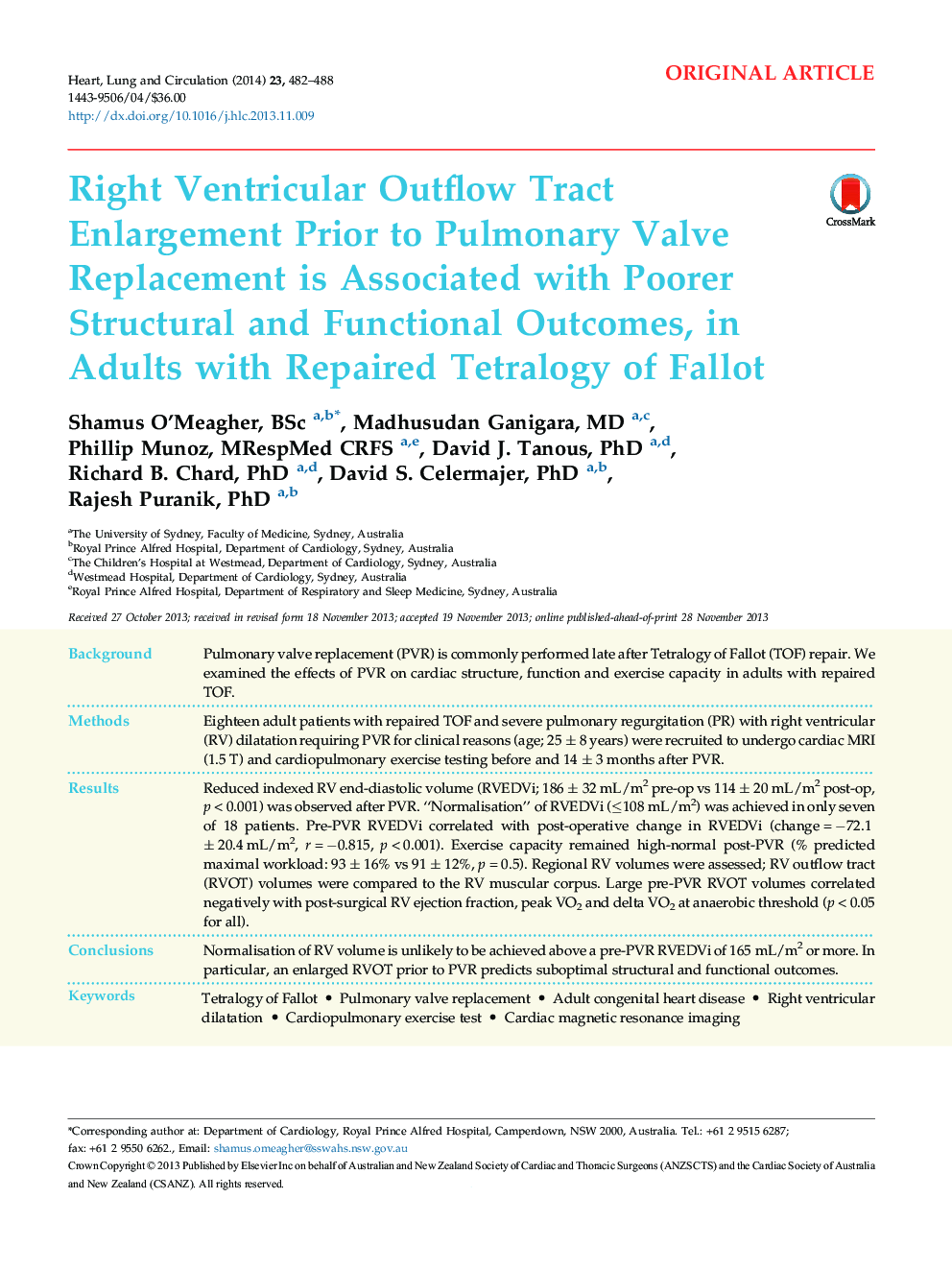| Article ID | Journal | Published Year | Pages | File Type |
|---|---|---|---|---|
| 2918223 | Heart, Lung and Circulation | 2014 | 7 Pages |
BackgroundPulmonary valve replacement (PVR) is commonly performed late after Tetralogy of Fallot (TOF) repair. We examined the effects of PVR on cardiac structure, function and exercise capacity in adults with repaired TOF.MethodsEighteen adult patients with repaired TOF and severe pulmonary regurgitation (PR) with right ventricular (RV) dilatation requiring PVR for clinical reasons (age; 25 ± 8 years) were recruited to undergo cardiac MRI (1.5 T) and cardiopulmonary exercise testing before and 14 ± 3 months after PVR.ResultsReduced indexed RV end-diastolic volume (RVEDVi; 186 ± 32 mL/m2 pre-op vs 114 ± 20 mL/m2 post-op, p < 0.001) was observed after PVR. “Normalisation” of RVEDVi (≤108 mL/m2) was achieved in only seven of 18 patients. Pre-PVR RVEDVi correlated with post-operative change in RVEDVi (change = −72.1 ± 20.4 mL/m2, r = −0.815, p < 0.001). Exercise capacity remained high-normal post-PVR (% predicted maximal workload: 93 ± 16% vs 91 ± 12%, p = 0.5). Regional RV volumes were assessed; RV outflow tract (RVOT) volumes were compared to the RV muscular corpus. Large pre-PVR RVOT volumes correlated negatively with post-surgical RV ejection fraction, peak VO2 and delta VO2 at anaerobic threshold (p < 0.05 for all).ConclusionsNormalisation of RV volume is unlikely to be achieved above a pre-PVR RVEDVi of 165 mL/m2 or more. In particular, an enlarged RVOT prior to PVR predicts suboptimal structural and functional outcomes.
